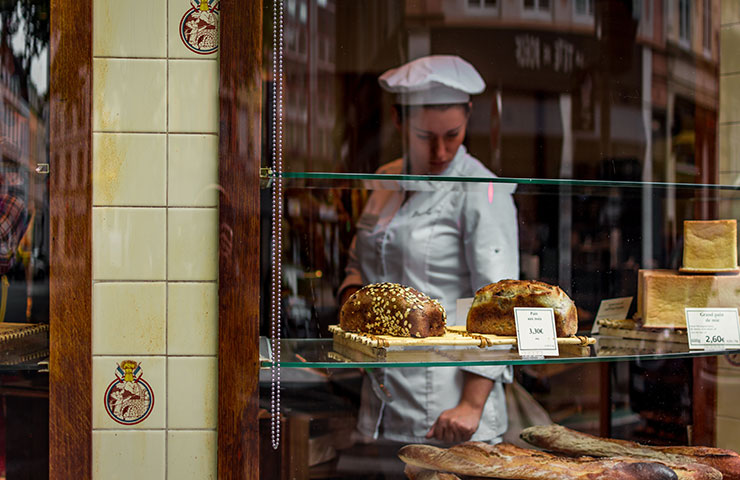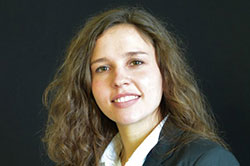What can we do with food waste?

“One-third of food produced for human consumption is lost or wasted globally, which amounts to about 1.3 billion tons per year.” (Gustavsson et al., 2011)
Food waste is generated at every stage of the supply network:
- In the agricultural sector, both crop cultivation and animal husbandry play a decisive role. Waste is generated either as organic refuse (e.g. cornstalks, fertilizer) through direct food waste or lost food (e.g. fruit or vegetables of low quality, damaged products left behind in the field, co-products with little or no commercial value.)
- The food industry loses valuable foodstuffs along the entire production chain. In processing and trade, the primary reasons for this are overproduction, overstock, mislabeling, underweight or overweight products (content amounts do not meet legal requirements or filling indications on the package) transport damage, assortment change, package redesigning or seasonal goods production.
- Internal agreements between processing companies and trading companies can also lead to the disposal of products. If the time available until the best before date of a product is too short for internal logistic channels, then the products are not put up for sale, and the producer disposes of the goods months before they reach the best before date (e.g. frozen food) (Schneider, 2008.)
- Another significant contribution to the increase in food waste comes from households. Final consumers generate waste mostly through frequent or excessive purchases, poor storage conditions, improper cooking methods and confusion between the terms “best before date” and “expiration date” (Papargyropoulou et al., 2014).
Valorization as a solution?
The generation of avoidable and partially avoidable waste causes problems at the economic, social and environmental levels. Food waste significantly contributes to greenhouse gas emissions, particularly methane emissions from landfills.
Valorization as a way to potentially increase value is one way to target this issue. Food waste represents a promising source of raw materials from which to obtain nutrients that are needed in many biotechnological processes for the production of valuable products (Lin et al., 2013). This also reduces the proportion of organic materials that would otherwise need to be treated or dumped.
Valorization routes offer a wide range of advantages:
From an ecological perspective, they can help greatly reduce emissions of methane, a powerful greenhouse gas. They can also contribute to the sustainable acquisition of natural resources and fossil fuels. At the social level, they can help diffuse the conflict between the cultivation of food crops and bioenergy crops, and from an economic perspective, they can save costs by being processed into bioproducts (Girotto et al., 2015.)
1. The concept of the biorefinery...
“A biorefinery is a facility that integrates biomass conversion processes and equipment to produce fuels, power and chemicals from biomass.” (bioenergyconsult, 2008)
Valorization routes for food waste in biorefineries include the extraction of valuable components which are already present in the substrates and utilized as raw materials in pharmaceutical applications or converted into chemicals, materials or biofuels.
... for the manufacture of chemicals:
Our food chain generates a lot of useful waste materials with available functional molecules such as flavonoids, waxes, biopolymers and fatty acids. From this waste, we can obtain valuable materials like collagen, pectin, starch or amino acids. With further decomposition, we can also produce such things as cellulose, biological solvents, alcohols or biological surfactants.
One interesting target for research is the huge quantities of fruit waste generated in the beverage industry. Global production is estimated at about 5 to 9 million tons of grapes and 3 to 4.2 million tons of apples a year (referring to the wet portion of by-products while the fruit is processed) (Djilas et al., 2009.).
From a global perspective, the high volumes of citrus peel present a perfect candidate for a combined extraction of marketable chemicals such as D-limonene, pectin and flavonoids. These considerations formed the foundation of the OPEC (Orange Peel Exploitation Company) project. At the Green Chemistry Centre of Excellence research has been done in the area of microwave activation, and scientists were able to produce D-limonene, pectin and a form of mesoporous cellulose from orange peels. Thus, various useful substances can be obtained with just a single process and no pretreatment whatsoever (Pfaltygraff et al., 2013.).
... for the manufacture of bioplastics:
Fish and meat production generates waste which poses a major health risk and requires stringent waste regulation laws and strict treatment procedures. Waste materials from slaughtering and fish production represent large quantities of complex raw materials. A team of researchers from the factory of the future have developed a comprehensive concept for utilizing animal remnants.
By breaking it down with water, it’s possible to transform slaughtering waste into a fraction of fat and a fraction that is rich in amino acids. The latter can be used to produce biodegradable plastics, and the fat fraction can be used to make biodiesel. Other interesting products that can be produced using slaughtering waste include planters, metal adhesives or mulch film made of bioplastic (Braunegg et al., 2006.).
2. The cultivation of microalgae – a further approach
Algae assimilate CO2 and use it in order to grow. They are comprised mostly of proteins and lipids. The latter can be used as a source of biofuels, as a component in the chemical industry and as an additive to edible oils in the food and health industry (Radakovits et al., 2010). Moreover, the cultivation of microalgae does not rely on arable land – they can be grown in sterile places or even on sea. Production is thus not in direct competition with food production and at the same time provides a sustainable source of proteins and lipids.
There are many promising studies demonstrating how food wastes can be a suitable cultivation medium for microalgae (Pleissner et al. 2013). These studies have already shown that by biochemically breaking down food wastes, we can produce a hydrolyzate which can then be used as a culture medium and nutrient source for two strains of algae. The result is a product which is rich in carbohydrates, lipids, proteins and saturated fatty acids and can be used as a raw material for biodiesel or as an additive in the food industry (Pleissner et al., 2013).
Conclusion
In relation to the feasibility of the aforementioned valorization strategies, the availability of waste plays a big role. The ability to supply consistent and regular, adequate volumes of specific categories of waste will determine whether or not valorization strategies will work. The greatest potential lies in unavoidable waste such as production waste from the food industry. Due to its constant and high volumes, the extensive substrate homogeneity and significantly easier collection, pre-consumer waste constitutes an interesting potential source. Bakery waste, filter residues from beer production or beverage production wastes such as citrus peels can be converted into various chemicals; slaughtering waste or used oils from the food service industry can be converted into biofuels.
Nonetheless, the highest priority should always be given to preventing waste generation as much as possible. Waste prevention is the top provision of the Waste Framework Directive 2008/98/EC and should be established as such in people’s minds. In this context, value improving practices can be another way to transform waste into new, valuable products.
More on the subject
Our ERP solution cc|environmental services can help you analyze new production processes, model it in an ERP system and thus make a contribution to environmental protection while also processing this waste flow in a profitable way.
About the Author: Anna Herist

Anna Theresa Herist works as a Junior Application Consultant in the ERP Environmental division with COSMO CONSULT (formerly FWI). In autumn 2017, she completed her diploma studies of Environmental and Bioresources Management at the University of Natural Resources and Life Sciences, Vienna, and has recently joined ERP consulting.